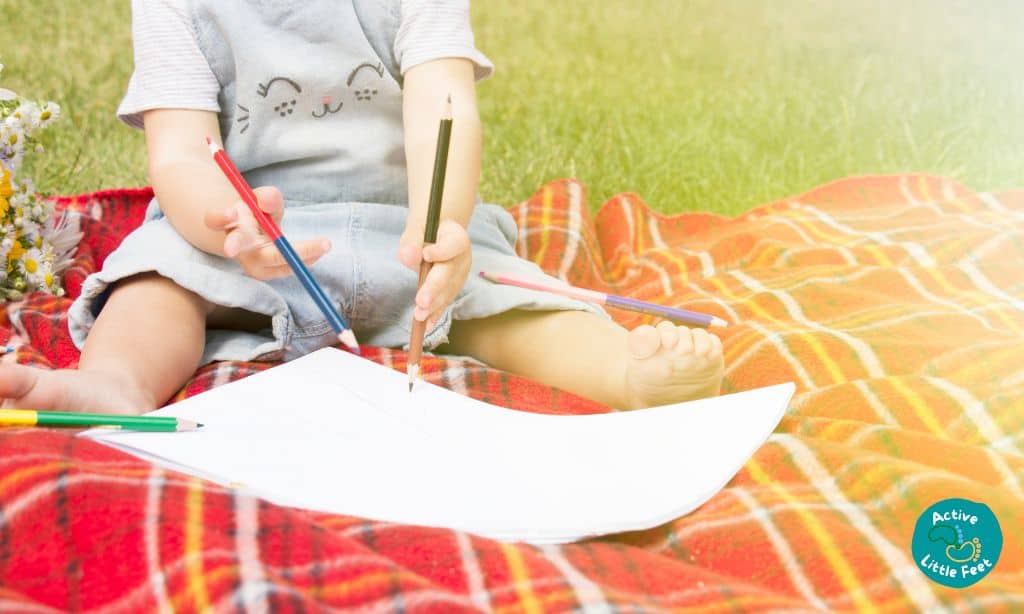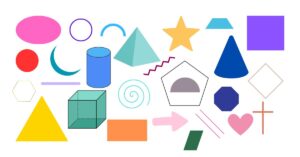Children need to develop their gross and fine motor skills to hold a crayon or pencil with an adult-style grip eventually. Depending on the child, these developments can happen at different ages and stages. However, finding the best pencil at each stage is crucial. So, which pencil is better for kids?
The best pencil for kids is the HB or 2B pencil. The pencils are smoother and easier to use, proving a happy medium for beginners. However, to know which pencil your child should use, you must understand their grip development and help them improve it.

1. The Fisted Grip
This grip is a beginner grip for children, and it usually happens when kids are one year old. During this stage, the child will hold a pencil or crayon in their palm and wrap all their fingers around it, forming a fist. With this grip style, your child will move their whole arm back and forth to write or scribble something.
According to experts, children work best with writing materials that can fit in their hands. These include fat crayons or pencils they can hold tight with their little fingers. You might also notice your child switching hands while writing when one arm gets tired.
During this stage, it is also important not to limit the child to pencils, crayons, and paper. Instead, encourage them to use chalk and practice drawing on the pavement and other surfaces. Remember, the pencil to use at this stage should be thick and short with a hexagonal or triangular shape to encourage the next pencil grip stage.
2. The Digital Pronate or Palmer Grasp
This pencil grip is similar to the fisted grip. Your child will still hold the pencil in their palm, but their fingers and thumb will be active. The four fingers can be at the front, and the thumb will support the pencil at the back. They will still use their whole arm to write, but less than before.
This stage usually happens when the child is between one and three years old. The best pencil to use at this stage is something thick and short with a triangular tip to encourage holding the pencil or crayon with the pads of their fingers. Read this article for a better explanation, If you’re wondering why kids use big pencils and crayons at this age.

3. The Three or Four-Fingered Static Grip
During this stage, your child will hold a pencil or crayon with the pads of their fingers. It is called a static grip because the fingers do not move while writing. Instead, the child will use their wrist and forearm to control the pencil. This grip usually develops when your child has joined preschool, and writing activities are more challenging.
To encourage your child to move to the next grip stage, give them broken crayons or small pieces of chalk to practice their writing and drawing. These tools will help your child advance to use three fingers and hold the pencil with the tips of their fingers. Our article on crayons and kids’ safety will also ensure you find the best crayons for your child.
4. The Dynamic Tripod Grip
Most children have the dynamic tripod grip from age five or six because their fine motor skills have developed enough to hold and control a pencil. You will notice your child holding a pencil with the tip of their fingers and using minimal wrist movement while writing.
The pencil will be between the thumb and the first two fingers. For some kids, the pencil will rest on the middle finger, and for others, the ring finger. Their arm will also rest on the table, similar to how adults write. You can continue with longer, jumbo-sized pencils during this stage before moving to thinner ones.
Here is a table summarizing different pencil lengths recommended for various ages.
| PENCIL LENGTH (Inches) | AGE |
|---|---|
| 7-7.5 | 6+ years |
| 5.5 | 4-8 years |
| 4.5 | 3-4years |
Regardless of the length, most pencils for kids are chunky, short, and triangular-shaped because the child is still developing their gross and fine motor skills.
Their muscles are still developing, so they need the right tools to help them learn and avoid pain as they grow. This article tackles the different development stages to determine how well your child should draw and write at each development stage.
Nonetheless, let’s get into more detail about why your toddler or preschooler should use fat pencils.

1. To Encourage Muscle Development
Your child goes through many muscle and bone changes from birth to seven years. When they are young, it is easier for kids to grip thick or broader objects. It also takes time for children to develop fine motor skills, and using wide objects like fat pencils for a while helps them get there. Moreover, thick pencils are easier to control for young kids making the learning process less stressful.
2. Fat Pencils Reduce Pain and Stress
Learning is supposed to be fun for young kids, and using thin pencils might make this impossible. Some kids complain that their hands hurt when they use thin pencils.
The pain can discourage them from wanting to learn how to write because they associate the process with pain. A thick pencil or crayon will fit in your child’s hand, making it easy for them to coordinate and control it.
3. Big Surfaces Require Big Tools
Has your child used the living room wall as their canvas? Young children enjoy using large surfaces to practice their scribbling and writing.
A large writing surface and a thick pencil help improve their gross motor movements and development. They improve their hand strength and coordination by scribbling on the wall or large manilla paper.

Which is the Best Pencil for Your Child to Use?
The best pencil for your child to use for writing or drawing is an HB or 2B graphite pencil. Graphite pencils with HB or 2B hardiness grades are similar because they are both soft. Soft pencils create dark lines which are easy to see and erase when one makes a mistake.
Other qualities to look for in beginner graphite pencils include the following;
- Strong lead that will not break easily
- Short to encourage your child to grip the pencil at the tip and have better control
- Thick for an easy grip
- Triangular shaped to promote good pencil grip
Remember, the size, length, and surface will affect how your child develops their pencil grip as they age. Jumbo-sized, short graphite pencils are the best for young kids as they are still developing their fine motor skills and hand strength.
They can advance to using thinner graphite pencils when they are older or in primary school. After all, the muscles can withstand the pressure. Lastly, if you want a detailed pencil review, read our article on the different types of pencils for drawing and sketching.




